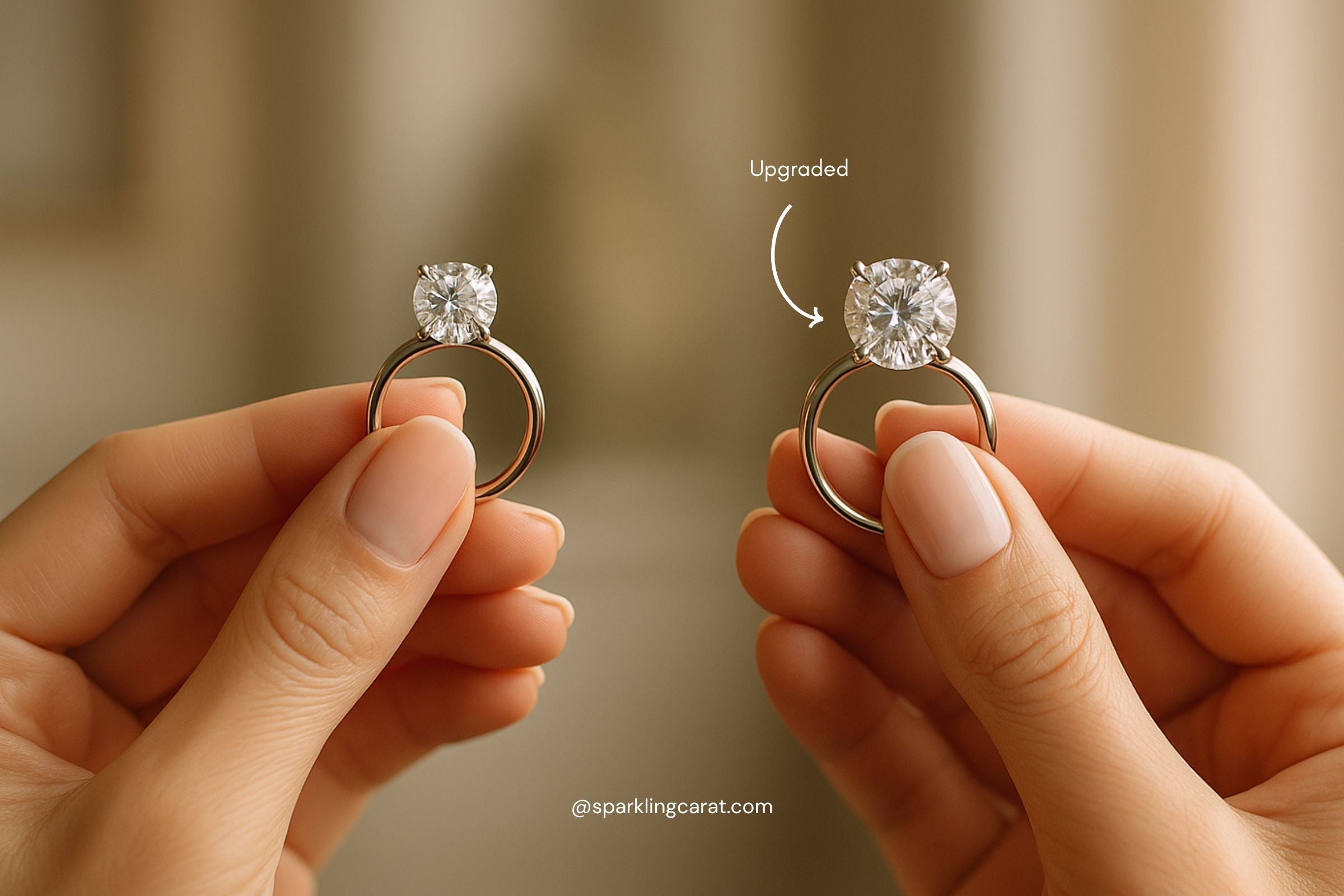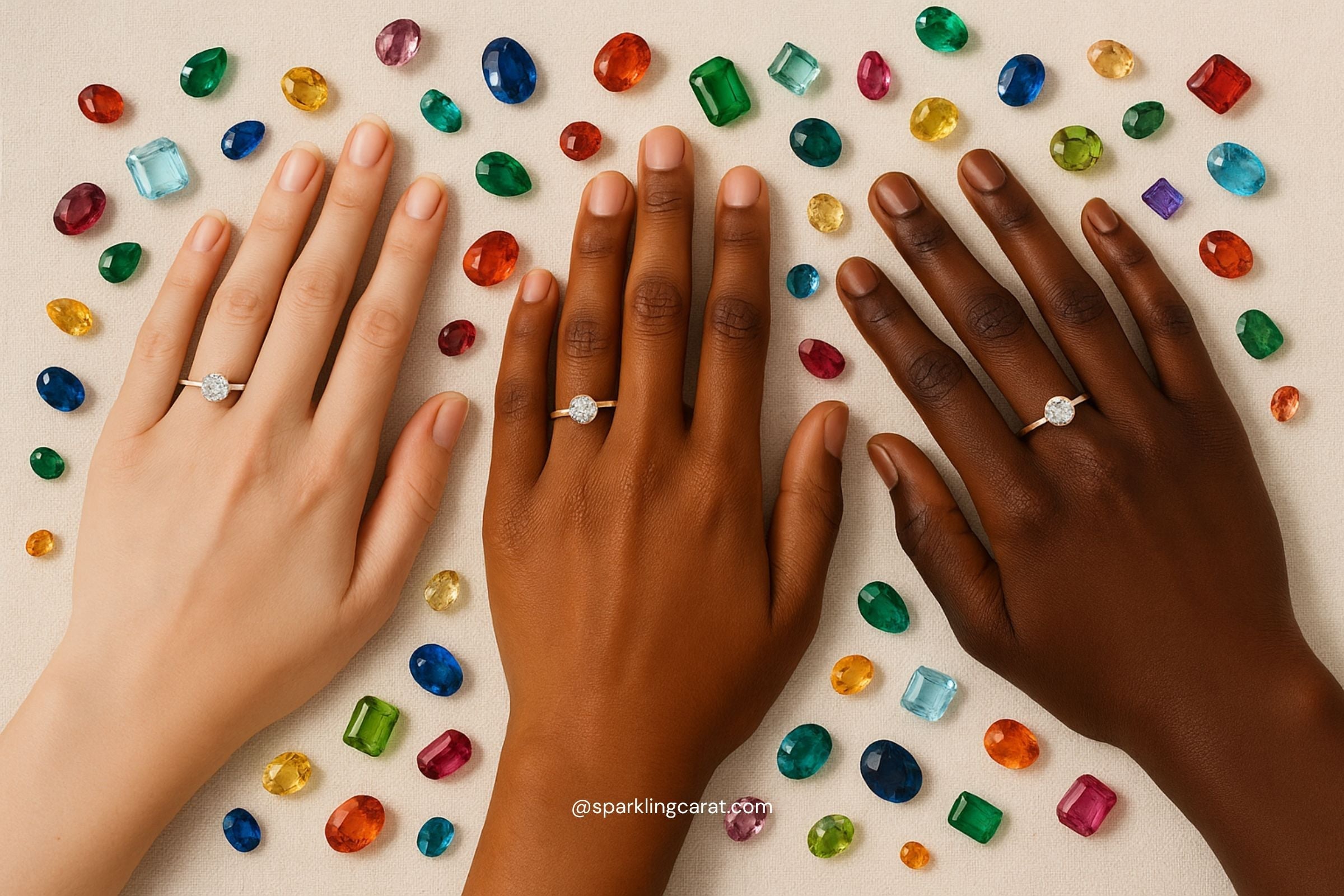Rose Gold vs. White Gold vs. Yellow Gold: Which One to Choose?
When it comes to fine jewelry—especially engagement rings, wedding bands, or timeless gifts—choosing the right metal is just as important as choosing the perfect diamond. Among the most popular choices are Rose Gold, White Gold, and Yellow Gold. Each of these beautiful metals has its unique look, properties, pros and cons, and suitability for different skin tones, lifestyles, and aesthetics.
In this in-depth guide by Sparkling Carat, we’ll help you understand the differences, advantages, and key considerations when selecting the right gold for your jewelry investment.
What is Gold Alloy?
Gold in its pure form (24K) is too soft for everyday wear. That’s why jewelers mix it with other metals to create durable alloys in different colors:
-
Yellow Gold: Mixed with silver and copper.
-
White Gold: Mixed with palladium or nickel and coated with rhodium.
-
Rose Gold: Mixed with more copper for a pink tone.
Most fine jewelry is made using 14K or 18K gold, which balances durability and luxury.
Yellow Gold: The Classic Choice
Aesthetic
-
Warm, rich hue.
-
Best for vintage-inspired, traditional, or regal looks.
Pros:
-
Hypoallergenic (when nickel-free).
-
Easiest to maintain.
-
Historically timeless.
Cons:
-
Softer than white gold.
-
Can show scratches more easily.
Best Paired With:
-
Diamonds with lower color grades (J–K) to complement the warmth.
-
Traditional engagement ring styles.
White Gold: Sleek & Modern
Aesthetic
-
Bright, silvery-white finish—similar to platinum.
-
Perfect for modern, minimalist, or high-fashion looks.
Pros:
-
Enhances the sparkle of diamonds.
-
Looks similar to platinum at a more affordable price.
-
Strong and durable.
Cons:
-
Requires rhodium re-plating every few years.
-
May contain nickel (allergy concern for some).
Best Paired With:
-
Colorless or near-colorless diamonds (D–G grades).
-
Contemporary or halo settings.
Check out our blog on Diamond Color Grades Explained for more insight.
Rose Gold: Romantic & Unique
Aesthetic
-
Soft pink hue that flatters most skin tones.
-
Offers a romantic, vintage, or feminine vibe.
Pros:
-
Very durable due to high copper content.
-
Rare and distinctive.
-
Affordable compared to white/yellow gold.
Cons:
-
May not suit all gemstone colors.
-
Copper can cause allergies in sensitive skin.
Best Paired With:
-
Oval or cushion diamonds.
-
Modern or vintage-inspired settings.
Planning a proposal? Read: How to Propose: Creative Ideas & Jewelry Tips
Matching Gold to Skin Tone
-
Fair skin: White or rose gold.
-
Medium/Olive skin: All three golds suit well.
-
Darker skin tones: Yellow gold stands out beautifully.
Durability & Maintenance Comparison
| Feature | Yellow Gold | White Gold | Rose Gold |
|---|---|---|---|
| Scratch Resistance | Moderate | High (with rhodium) | High |
| Maintenance | Low | Medium (re-plating) | Low |
| Allergy Concern | Low | Medium (if nickel) | High (copper) |
Style Recommendations
| Style Type | Best Gold Option |
|---|---|
| Vintage/Romantic | Rose Gold |
| Classic/Traditional | Yellow Gold |
| Sleek/Contemporary | White Gold |
Read More:
-
What is a Halo Setting in a Ring? Pros and Cons – Choose a gold tone to enhance your halo design.
-
Top 10 Engagement Ring Trends in 2025 – Find out which gold tones are trending now.
-
Ring Sizing Guide: How to Find the Perfect Fit – No matter the metal, make sure it fits right.
-
Lab-Grown vs. Natural Diamonds – Metal tones pair beautifully with both!






Leave a comment
This site is protected by hCaptcha and the hCaptcha Privacy Policy and Terms of Service apply.